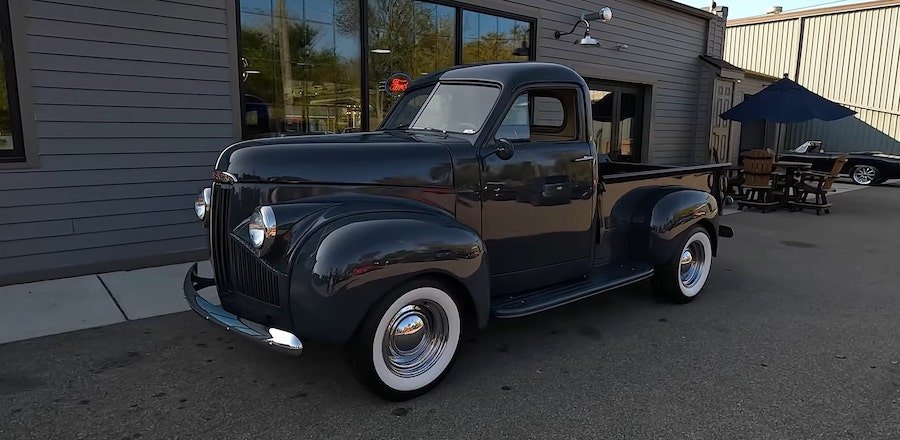This 1946 Studebaker M5 Is the Quirkiest Pickup Truck You'll See Today

The company introduced its first truck, the Truckette, in 1919. In 1937, Studebaker rolled out the more iconic Coupe Express, based on the Dictator passenger car. Four years later, the M-series debuted as the brand's first conventional pickup truck.
The latter was followed by the 2R/3R series in 1948, the E-series in 1955, and the Transtar in 1957. Studebaker's venture into the pickup market also included the short-lived Scotsman (1958-1959) and the Champ (1960-1964). Although they didn't sell well compared to Ford and Chevrolet haulers, many of these trucks brought various innovations to the market.
But some of them also stand out thanks to their unique designs. The Coupe Express is widely regarded as one of the most beautiful pickups ever built, while the Champ was pretty much a tough-looking Lark with a bed. The M-series looks decidedly quirky due to its unusual three-piece grille.
Introduced for the 1941 model year (for civilian use), the M-series was available in various sizes. The range included the half-ton M5, the 3/4-ton M15, the one- and 1.5-ton M15A, and the two-ton M16. At the time of its introduction, it was America's most aerodynamic truck. The M-series was discontinued after the 1952 model year. Studebaker sold a total of 145,800 units, 52,541 of which were M5 haulers.
The 1946 version you see here is the M5, the lightest iteration of Studebaker's first conventional pickup. It's one of 14,052 M5 units produced that year but one of only a few that are still running and driving nearly 80 years later.
A restoration that looks pretty much pristine on the outside, this truck comes with a few modern touches, which you'll find on many vehicles this old. These are mostly visible inside the cabin in the form of vinyl materials, speakers integrated into the door panels, and MP3 player connectivity. Of course, the overall layout has been kept largely stock, and the two-tone upholstery is gorgeous.
The truck still has a Studebaker engine under the hood, but the original 169-cubic-inch (2.8-liter) inline-six was replaced with a 1950s powerplant. The replacement flathead six-cylinder was built by Studebaker engine wizard Bill Cathcart and features higher compression and a dual carburetor setup. The unit mates to a bespoke five-speed manual transmission.
There's no info on output figures, but the video footage below reveals the truck is peppier than the average M5. All told, it's a nice truck that combines near-stock looks with upgrades that make it more enjoyable on the road.
Noticias relacionadas
